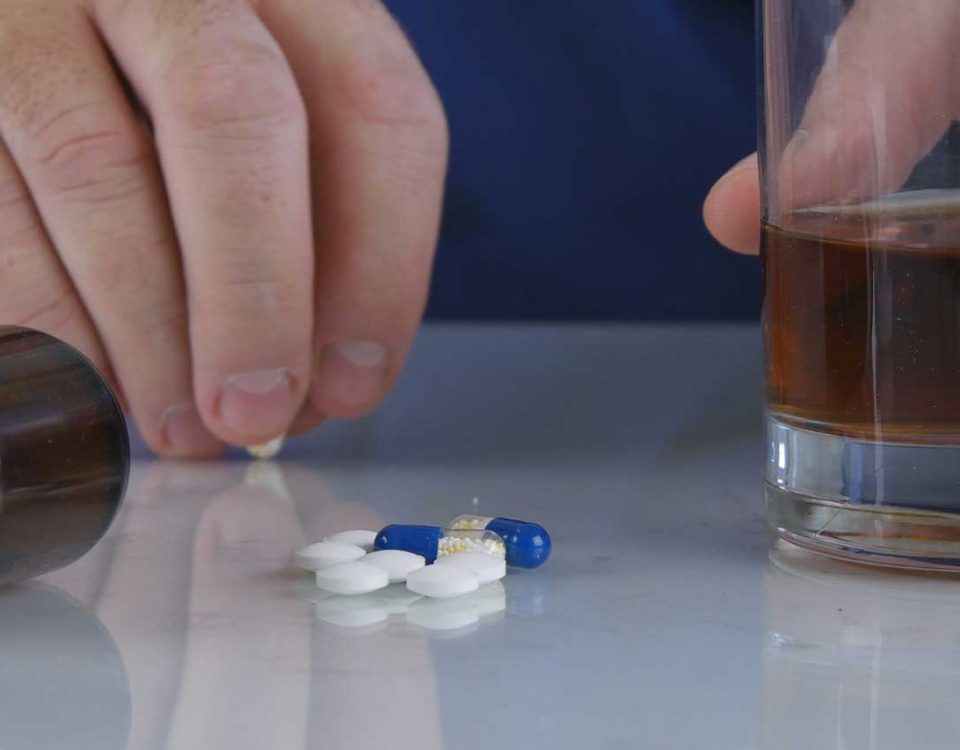Dolophine is the brand name for a strong, synthetic (man-made) narcotic called methadone. Dolophine acts on the central nervous system similar to other narcotics by attaching to opioid receptors. The drug blocks pain signaling from the body to the brain to alleviate the user’s symptoms. Dolophine is usually used to treat severe ongoing pain, such as pain caused by cancer. However, as with any other medication, patients must always consider common Dolophine side effects when following this form of treatment.
What Is Dolophine and How Is It Used?
Otherwise known as methadone hydrochloride (HCL), Dolophine is part of the opioid drug class. Opioids, or narcotics, are a type of sedative that’s normally prescribed as a painkiller.
Common opioids include morphine, hydrocodone, and oxycodone. Dolophine is specifically an opioid agonist, meaning it attaches to opioid receptors in the brain to decrease the sensation of pain.
Dolophine is also commonly used to reduce drug cravings during medically monitored detox. Initially approved by the Food and Drug Administration (FDA) in 1947, Dolophine has been used for many years and is currently approved for the treatment of severe pain, opioid detox, and maintenance of opiate dependence treatment.
Due to its high potential for abuse and addiction, Dolophine can only be dispensed and administered via specialized treatment programs that are certified by the Substance Abuse and Mental Health Services Administration. Newly prescribed patients are always monitored closely, as respiratory depression is the most common of Dolophine side effects.
Methadone use is closely monitored for 24 to 72 hours, after which the individual can continue their treatment if they do not experience any negative reactions to the medication. Dolophine tablets are available in 5mg and 10mg, and the dosing schedule depends on the individual’s condition and the severity of their symptoms.
When used as an opioid analgesic (for pain relief), Dolophine is prescribed at 2.5 mg orally every 8 to 12 hours. The medication reduces the suffering linked to excessive pain, and as the pain becomes more tolerant, the dose should be gradually reduced to avoid opioid withdrawal symptoms and possible addiction.
Dolophine HCL Side Effects
Dolophine (methadone) side effects are usually more pronounced during the initial adjustment phase or when the person starts taking the medication. Methadone, the active ingredient in Dolophine, has undergone significant safety assessments since its approval in 1947 to decrease risks like overdose and respiratory depression.
Long-term methadone maintenance therapy has become a safe treatment option for many people struggling with opioid dependence, although the form of care should always be decided and administered by a medical professional. However, all medications come with side effects.
Common Dolophine side effects include:
- Abdominal pain
- Cardiac arrest
- Constipation
- Dizziness
- Lightheadedness
- Nausea
- Vomiting
- Respiratory depression
- Sedation
- Sweating
- Systemic hypotension (significantly low blood pressure)
- Dependence and addiction
Respiratory depression (slow and shallow breathing,) low blood pressure, cardiac arrest, and addiction are all more serious short and long-term side effects of methadone. As a sedative, Dolophine comes with the risk of slowing down important functions like breathing, increasing the risk of unconsciousness, brain damage due to lack of oxygen, and even death.
Dolophine overdose is also a possible risk of use, especially when the drug is abused or taken in higher doses than prescribed. Dolophine abuse can also lead to physical dependence and possibly addiction, which may require treatment at a facility like our rehab in Texas.
To avoid the risk of overdose, dependence, and addiction, only take Dolophine as prescribed by a doctor. Follow your doctor’s dosage schedule and avoid mixing the drug with any other medications or substances unless approved by the physician.
Help for Dolophine Use
Opioids like Dolophine are leading a drug epidemic in the U.S., which has directly impacted millions of people in heartbreaking ways. If you or someone you care about is struggling with opioid abuse, our Texas treatment center can help.
Banyan offers opioid addiction treatment in Waelder that utilizes medical detox and therapy programs to aid clients in physical and mental recovery. Recovery is possible for everyone at our facility.
Call Banyan Treatment Centers today at 888-280-4763 for more information about our Texas drug and alcohol treatment.
Related Reading:









